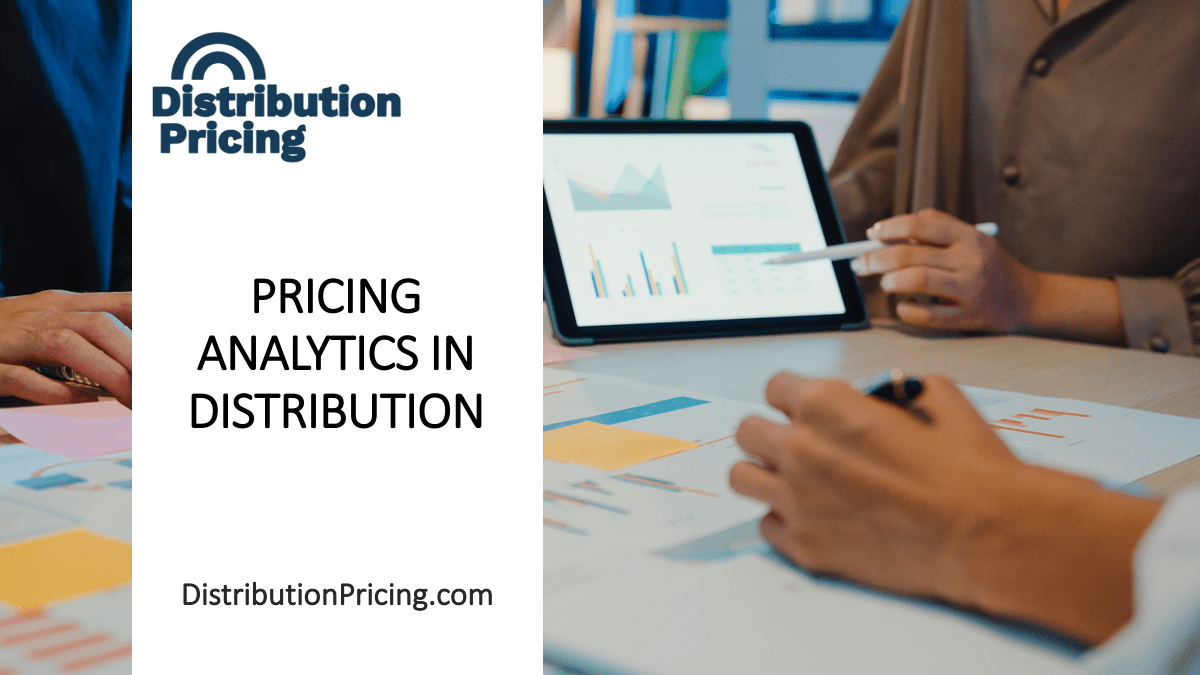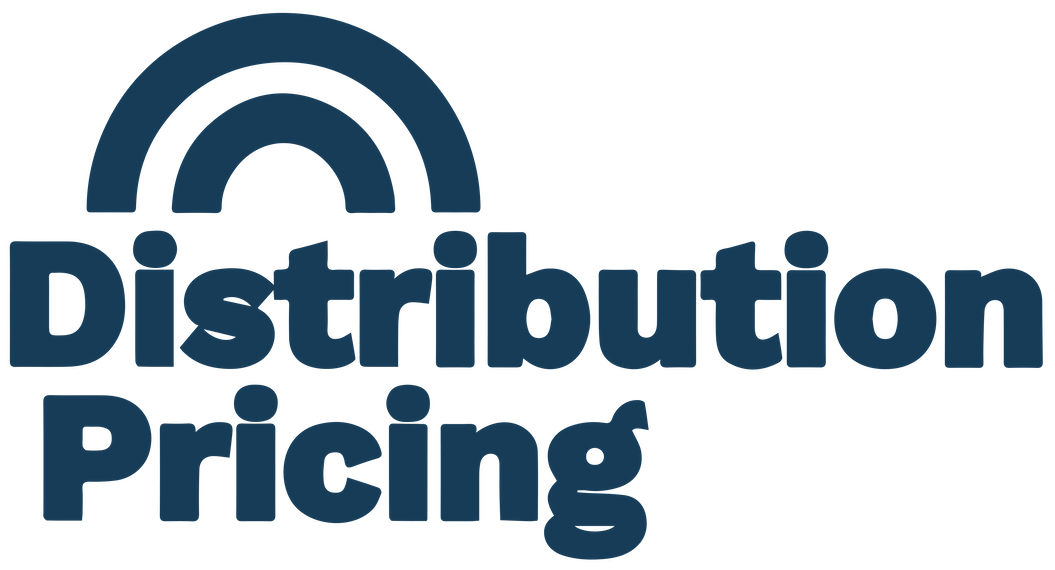As distributors, we get so wrapped up in our insular world we sometimes miss how…

What Are Pricing Analytics in Distribution: Turning Data into Dollars
Distribution pricing analytics is the term used to describe the range of metrics and software used to understand and explain how pricing affects profit. This analytical software is often used to help distributors gain a more thorough understanding of how profitability differs for a range of different pricing options and how far distribution optimization could improve the potential profitability of products and services.
Distribution pricing analytics is now essential to a company’s overall growth strategy. By helping businesses understand how their pricing strategy affects profitability and what they can do to optimize them, this branch of analytics promises to play an increasingly important role in business decision-making.
Pricing analytics is important for gaining a competitive advantage in distribution because it can help businesses understand how their pricing strategies affect profitability, demand, customer behavior and market forces. This information is essential to a company’s overall growth strategy, as it can help them make more informed decisions about where to focus their efforts to improve their bottom line. In addition, pricing analytics can also help businesses understand how their competitors are pricing their products and services, giving them an edge when it comes to setting prices. By using pricing analytics, businesses can ensure that they are getting the most out of their reps and branch locations and are doing everything possible to stay ahead of the competition.
There are three large categories of pricing analytics: historical (sometimes called descriptive analytics), predictive and prescriptive.
Historical Pricing Analytics
Historical pricing analytics is the examination of past pricing data to understand how customers have reacted to pricing changes in the past. This information can be used to make better decisions about future pricing changes.
Some of the metrics that can be analyzed in this context include month-on-month sales growth, year-on-year pricing changes, average revenue per customer, or changes to the number of new purchases related to a particular product price over a particular period. By understanding how customers have reacted to price changes in the past, businesses can make more informed decisions about what prices to charge in the future.
Setting up an historical pricing dashboard using standard business intelligence tools is straightforward for most distributors. But the next step – predicting future profitability trends – is more complex.
Predictive Pricing Analytics
Predictive pricing analytics is a form of analytics that uses historical data to make predictions about future events. This data can be used to optimize prices with future goals in mind. It isn’t always about maximizing revenue. Your strategy might be to maximize overall profit or to increase order volumes to hit a new rebate level.
Statistical algorithms and machine learning are used in predictive pricing analytics to ensure the best possible results. By analyzing past data, businesses can get a better understanding of how customers will react to future price changes. This information can then be used to make more informed decisions about what prices to charge.
Predictive pricing analytics can be a valuable tool for businesses that want to optimize their prices with future goals in mind. By using historical data, businesses can make more informed decisions about what prices will be most successful in the future. It typically requires advanced price optimization solutions.
Prescriptive Pricing Analytics
Prescriptive pricing analytics is a form of analytics that uses historical data to make predictions about future events but then go a large step forward and provide suggestions for where to take your pricing in the future. This data can be used to optimize prices with future goals in mind.
For solutions that offer prescriptive pricing analytics, they again use statistical algorithms and machine to ensure the best possible future outcomes of price changes. By analyzing past data, businesses can get a better understanding of how customers will react to future price changes. This information can then be used to make more informed decisions about what prices to charge. These solutions are more expensive and specialized than simple BI tools or dashboards but allow distributors to make more informed decisions about what prices will be most successful in the future.
Prescriptive pricing analytics goes beyond predictive analytics by not only predicting what could happen but prescribing actions on how to achieve better results. It is the most proactive and goal-driven of the three types of pricing analytics, striving to achieve specific outcomes such as increased profits or market share.
A distributor that uses prescriptive pricing analytics has access to powerful tools and techniques for arriving at the best price point for its products or services. These include optimization algorithms, simulation models, and machine learning. With these tools, a business can not only determine how customers are likely to react to different prices but also experiment with different scenarios to see which one produces the best results.
Price Analytics Features
In our analysis of price optimization solutions, we consider the following to be important features to consider in price analytics. No single solution is perfect in all areas, so you want to consider which features are the most important to your company and run each provider through a private demonstration of their capabilities. If you want an outside and independent evaluation, please contact us and we’re happy to provide help in guiding you to a solution that fits your distribution business.
Dashboards
A pricing analytics dashboard is a tool that allows businesses to view their pricing data in a graphical format. This type of dashboard can be used to track the performance of individual products or product categories, as well as to identify trends in customer behavior.
Some of the benefits of using a pricing analytics dashboard include:
- improved understanding of what prices are most and least effective
- ability to quickly spot changes in customer demand and adapt prices as needed
- ability to compare the performance of different products and make changes as needed
- better understanding of how price changes impact overall sales
Reporting
A pricing analytics report is a document that shows how certain changes in price will affect a company’s revenue and profit. They are useful for making data-driven decisions about pricing and understanding how competitors’ prices may impact your business. While dashboards are more interactive, sometimes you just want a static report delivered to key stakeholders with the same information each period. However, you don’t want to have to build the report yourself in the software or in your spreadsheet. So, it is important that your price optimization solution have reporting capabilities and not just dashboards.
Drilldowns
Not all dashboards or user interfaces are created equally when it comes to analyzing data. You want to be able to drill down into your data to make further connections in your analysis. This isn’t always as easy as it would appear, and some solutions don’t give you the ability to analyze your own data on the fly. So, you want to make sure your solution has data drill downs.
Advanced capabilities
An analytics solution can provide a wealth of information to help businesses make better decisions. Some of its advanced capabilities include:
- Segmenting data to identify trends and correlations
- Identifying which marketing channels are most effective
- Determining the ROI of marketing campaigns
- Measuring customer engagement and loyalty
- Predicting future customer behavior
Automated Alerting
Automated alerts about customer behavior are important to a distributor because they provide the distributor with information about how customer trends are changing in real time and give you the ability to respond quickly. This could involve drops in demand, changes in online activity, specific alerting or information regarding large bids and quotes. This information can help the distributor respond quickly to issues and better serve their customers. Additionally, automated alerts can help to identify and resolve any issues that customers may be experiencing on the website or in a particular location.
Price contract analysis
Pricing contracts for important customers are a critical part of doing business in distribution. The topic goes far beyond the scope of this article, but you’ll want to consider contract analytics as part of your pricing analytics strategy.



